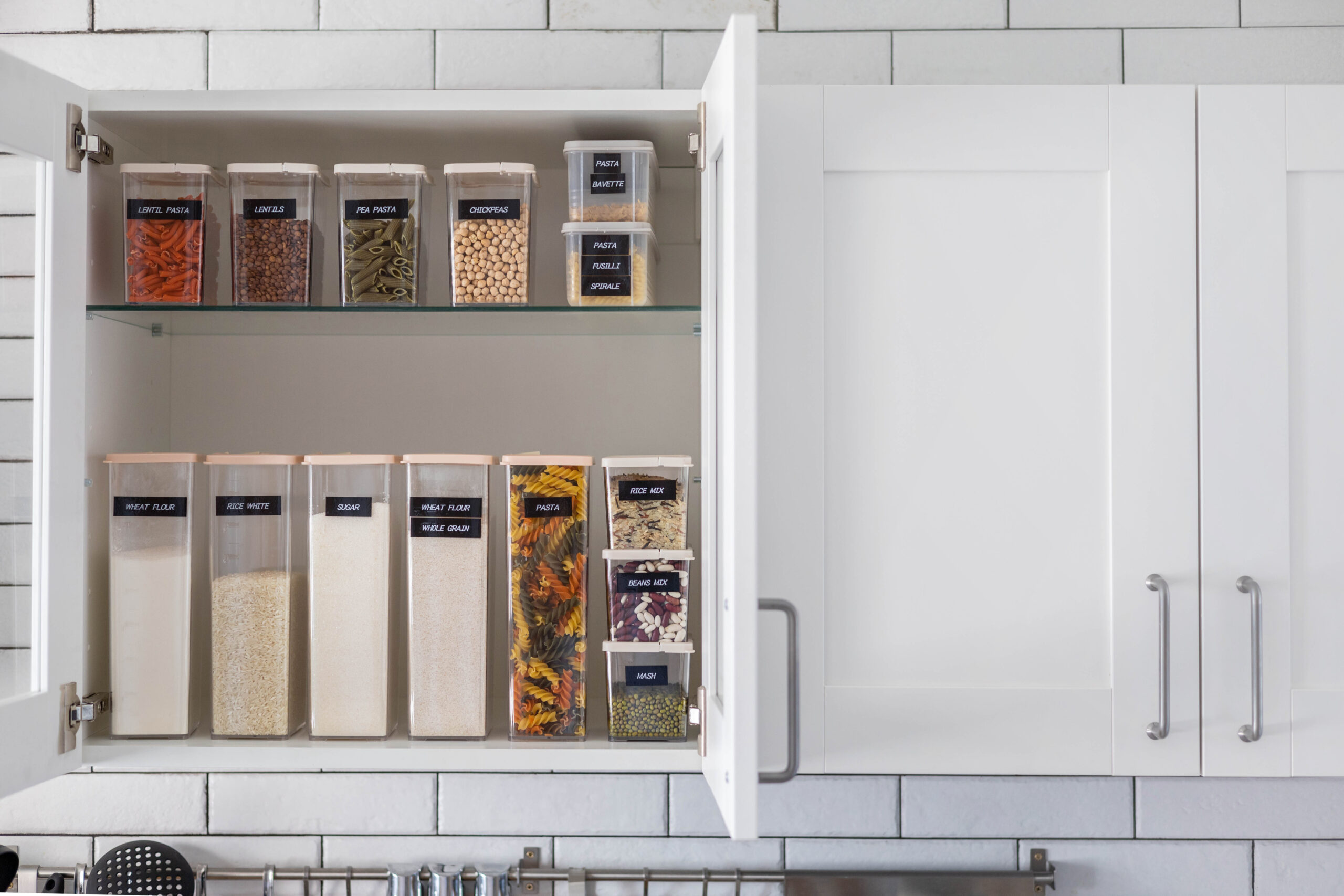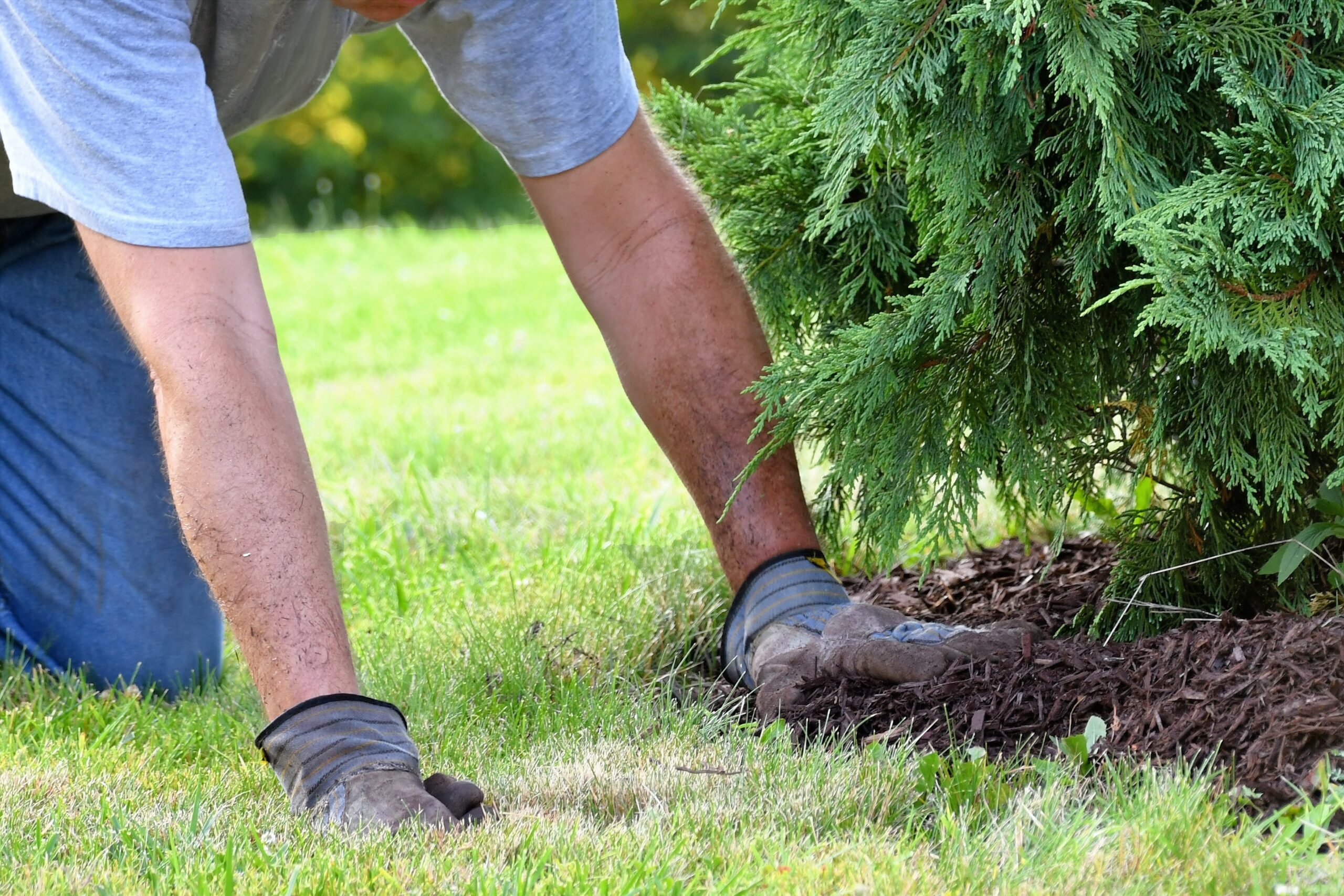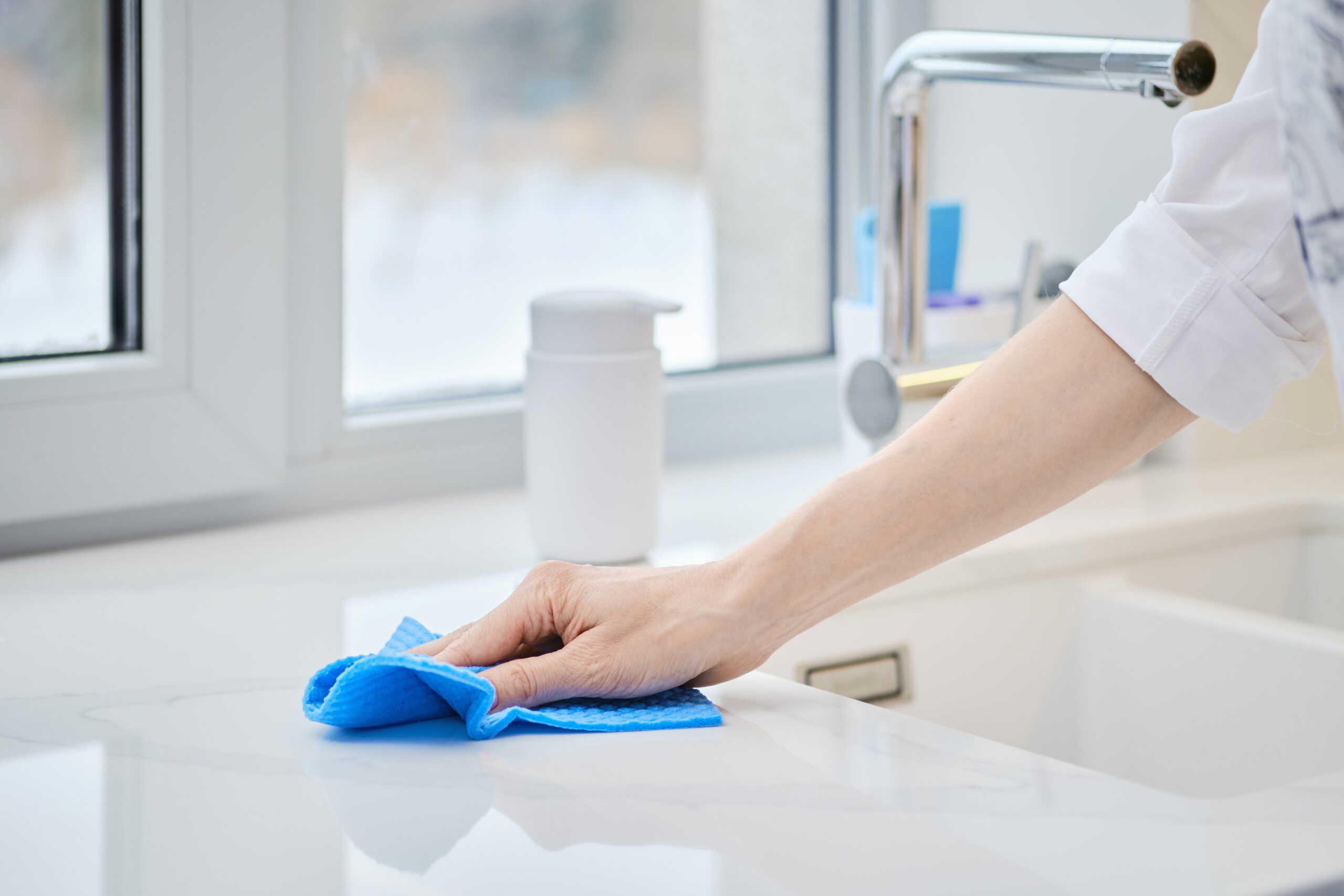New Years’ Resolutions For Ideal Pest Prevention
New Years’ Resolutions For Ideal Pest Prevention
Happy New Year from Green Pest Services! Many people see the start of the year as the perfect time to visualize and plan out their goals for the next 12 months. From vision boards to yearly bucket lists, there are all kinds of ways to document the things you want to do this year. Many of these items have to do with improving different areas in one’s life, from eating healthier to reading more books to budgeting well. As you think through the different categories of life to work on this year, there is one area that is left out of this tradition far too often: pest prevention!
It’s easy to forget about the importance of preventing pest infestations when you haven’t experienced one in a long time, but just because you don’t have a current pest problem doesn’t mean that one will never occur. Many of the best ways to keep pests out are everyday tasks that you probably do already. But if you’re looking for simple New Years’ resolutions to make, we have plenty of suggestions on productive habits to start. These will not only benefit your home, they will also keep pests from entering your space whenever they want.
Food Storage

Proper food storage is often at the top of lists regarding the best ways to prevent pests, and for good reason. Open food items are one of the most common attractants for all kinds of pest species, including ants, roaches, rodents, and flies. In short, the best way to utilize food storage to your advantage in preventing pests is to keep everything sealed and organized. From using sturdy containers to throwing out expired items, having consistent food storage practices is a great resolution to make this year.
Some of the most important tasks to complete in the ongoing quest for pest-free food storage include:
- Use airtight containers. Any opened food items, like cereal and chips, are safest in airtight Tupperware containers. These types of containers are now available at many stores, so there are plenty of options for colors and materials. No matter which containers you choose for your kitchen, the most important features for them to have are solid lids with an airtight seal. Glass and acrylic containers are the best for keeping pests out because they can’t chew through the exterior, as opposed to cardboard and thin plastic.
- Transfer baking essentials to new vessels. Speaking of storing opened food items, all of those baking essentials that we keep in our cabinets should be kept in airtight containers. Pantry staples are often invaded by pantry pests, like Indian meal moths and ants, since the ingredients usually sit untouched in their original flimsy containers for weeks or months at a time. The ingredients that are essential to keep in airtight containers are flour, sugar, baking powder, baking soda, powdered sugar, and brown sugar.
- Declutter expired items. Throwing out expired foods is a good habit to have — simply for your own health — in the world of pest prevention. Any cans, boxes, or bags of food that are leaking and/or expired should be thrown away as soon as possible. Food-loving pests, like ants and roaches, are attracted to food sources that are easily accessible to them. Check your cabinets and pantry for any compromised food items often. If anything leaks, sanitize the shelf after throwing the food away.
Yard Work

The warmer weather encourages all kinds of plants, grass, flowers, and trees to grow, which unfortunately means more work for us. A cared-for yard is one of the best features of any home. It’s more enjoyable for the residents of the home (obviously), but a yard that is properly maintained is also more resistant to pest infestations. Garden pests target foliage that is overwatered or unhealthy, and overgrown grass can hide all kinds of creepy-crawlies that want to invade the nearby house. By doing a bit of yard work at a time, a healthy and happy yard will be yours in no time.
- Trim back plants. Any plants that physically come in contact with the house essentially provide easy access for any pests in the yard. Rodents, ants, and spiders can use the foliage as a highway to the siding, where they can search for an entry point. Throughout the year, keep all plants, bushes, and tree limbs trimmed back from the house by at least a foot.
- Remove organic debris. As the greenery goes through its different seasonal phases, the organic clutter on the ground will also change. The abundance of weeds in the spring and summer and the leaf litter in the fall and winter can all provide both food and shelter for smaller pests. Remove all weeds, leaf litter, and dead twigs from the yard on a regular basis to remove these resources for yard pests.
- Use the proper amount of water. Anyone with a green thumb will be the first to stress the importance of only watering plants the proper amount. Too much water will leave them droopy and soft, but too little water will stress the plants to the point of losing their leaves. Pests are drawn to plants in both of these states for the ease of eating them, so it is essential to give every piece of greenery the right amount of water.
- Mow the lawn. The lawn is easily forgotten in the world of outdoor pest prevention, since much of the focus is on protecting the garden and flowers from the jaws of hungry pests. But the lawn can also attract pests — particularly when it’s overgrown — since they can hide at the base of the grass blades. Keep the lawn mowed to its proper length, and make sure it receives the right amount of water and fertilizer as needed.
A Clean Kitchen

A tidy house will generally be less likely to attract pests because they would have fewer hiding places. Out of every typical room, the kitchen is subjectively the one most likely to experience pest issues and therefore needs to be kept relatively clean. It’s not necessary to do a deep cleaning of the entire space every day — unless you want to — but keeping the kitchen free of any crumbs and opened food items is crucial in preventing pest infestations. By eliminating access to easy food sources, you subsequently cut down on the risk of hungry pests forcing their way into your space.
- Do the dishes. Is it one of the most tedious chores? Absolutely. Is it essential in preventing pests from invading for the food scraps? Definitely. Whether you hand-wash, use the dishwasher, or do a combination of the two, washing the dishes in a timely manner is one of the easiest tasks you can do to keep your kitchen pest-free. If you prefer to leave the dishes for the next morning, we suggest rinsing off all of the food debris before leaving them in the sink.
- Clean the counters. If you’ve had the misfortune of experiencing an ant invasion, you know just how little food they require. Ants, roaches, and rodents are attracted to all kinds of crumbs and spills that accumulate in the kitchen, which will motivate them to stay and see what else they can scavenge. A good habit to get into is to clean the counters with an antibacterial wipe or spray at the end of the day to remove all food remnants.
- Organize the pantry and cabinets. This one is not so much an everyday chore as it is a good project to complete once in a while. Pests love clutter because it gives them all kinds of hiding spots and food sources. This is why it’s common to be surprised by a hidden spider when going into a packed garage or basement. If they’re not already, we recommend organizing all of the cooking equipment and dried goods in your kitchen cabinets into simple rows and stacks, or something similar.
Chores

The general chores that we do to maintain the cleanliness and efficiency of our homes aren’t the most exciting tasks in the world. Most of them involve cleaning the same objects on a regular basis, such as clothes and dishes. When we don’t keep up with these chores, there is a higher risk of attracting pests throughout the year. It’s not necessary to keep a spotless house in order to prevent pests — they will invade clean homes too — but it certainly lessens the chances of having an infestation. The less food scraps and dirt there are, the fewer attractants pests will have.
- Make sure all trash gets into the garbage can. A simple task, to be sure, but an important one. If empty food packages and scraps are left out on the counter for days on end, they will eventually attract scavenging pests. Most pests are small enough that even tiny crumbs and spills are enough to satisfy their appetites, so any discarded food items that are left out on the counter will be primary targets for all kinds of creepy-crawlies. By throwing any food-related garbage into the designated trash can, you automatically remove a major attractant for invasive pests.
- Stay on top of the laundry. The pile of dirty laundry feels like it’s never-ending, especially if you wash clothes for everyone in the home. There are many pests that love dirty laundry for both the stains and the fabric, the most common being crickets, roaches, and rodents. You do not have to keep the hamper completely empty to prevent pests, which is great seeing as how that’s impossible. Two of the best ways to prevent pests are to keep all of the dirty clothes in one place and do some loads before it becomes a mountain of laundry. If there are any stained items, treat the stains as soon as possible.
- Clean the floors. The floors in our homes go through the most wear-and-tear of any household feature. From dropped food to dirty shoes to claw marks, the floors have seen it all. All of the dirt and debris that accumulates on the flooring are, oddly enough, extremely appealing to many pests. Roaches, rodents, dust mites, and silverfish are some of the most common pests attracted to the dirt and debris in our homes. Each type of flooring calls for a different cleaning method, and vacuuming, sweeping, and mopping are the most effective. No matter which one you choose, we suggest completing a basic floor cleaning at least once a week.
A Sealed House

Finally, ensuring that your home is completely sealed from the outside is essential in preventing pests from invading the structure any time of year. Entry points are the places in a house or building where pests can slip in unnoticed, especially if they are tiny themselves. These can be as small as a crack in the wall, or as large as a hole near the chimney. If these entry points are not properly sealed, they will likely be exploited by pests before long. Structural imperfections such as these are often the results of adverse weather (snowstorms, excessive rainfall, etc.) or the natural aging of the house. Whatever the reason behind them, sealing these entry points is one of the best ways you can protect your home from invasive pests.
- Seal cracks and gaps. First and foremost, sealing any cracks, crevices, gaps, and holes in the house is imperative in preventing pests. We recommend inspecting the interior and exterior walls during each season to see if there are any new imperfections that have popped up. The areas around pipes and utilities are especially prone to cracking. Every time of year has its own specific pest problems, so there isn’t a season where pests are not actively trying to invade your home. Smaller imperfections can be sealed with waterproof caulk, while larger gaps can be filled with copper mesh or steel wool before sealing it off with caulk.
- Check door and window screens. Speaking of easy entry points, any holes in window and sliding door screens are often sought out by pests. One of the greatest joys of warmer weather is being able to open up the house all day, so having good screens is essential in these months. Before opening up all of the doors and windows in your home, give each screen a quick visual scan to ensure there aren’t any holes or rips in the material. If there are a couple of smaller gaps, you can patch them with extra screen material. A screen with an abundance of holes should be replaced with new mesh.
- Utilize door sweeps. Any gaps in the house can and will be used by pests, and that includes anywhere around the doors. We think of our doors as being our own entrances, but the gaps and holes on the bottom of exterior doors are easy access points for pests. We recommend inspecting each of the doors leading outside for any gaps along the bottom on a regular basis since they can develop at any time. If a door sweep is cracked or warped in any way, replace it with a new one as soon as possible.
Professional Pest Control Services
In our humble opinion, the best pest-related New Years’ resolutions you can make involve professional services. This is the most reliable way to keep your home pest-free in every season, especially if you have an annual pest problem that is only temporarily solved every time (looking at you, summer ant invasions). At Pointe Pest Control, we are dedicated to providing long-term solutions for all kinds of pest issues. Our technicians are all fully trained and experienced in eliminating and preventing local pests, and we do not leave any problem unsolved. We begin every service with a thorough inspection of the property to search for any pest activity, including nests and structural damage. These findings inform the customized treatment plan we create that is tailored to solve the specific pest issues at hand. Since all of our products are non-toxic, there is never a risk of dangerous pesticides lingering in your home after the service. Contact us today for a free quote on our efficient services and to learn how the Pointe Difference will keep the pests out of your space!
Citations
Speer, F. (2021, January 22). Setting a new years’ resolution to prevent pests. Clark Pest. Available at https://www.clarkpest.com/commercial-service-blog/setting-a-new-years-resolution-to-prevent-pests (Accessed on December 18, 2023).
The one resolution homeowners should make. (n.d.). Pest World. Retrieved December 18, 2023, from https://www.pestworld.org/news-hub/pest-articles/homeowners-if-you-make-one-new-year-s-resolution-make-it-this-one/
8 Creative Ways to Have a Pest-Free Fourth of July
8 Creative Ways to Have a Pest-Free Fourth of July 8 Creative Ways to Have a Pest-Free Fourth of July Summary: The Fourth [...]
A Simple Guide to Preventing Stinging Pests
A Simple Guide to Preventing Stinging Pests A Simple Guide to Preventing Stinging Pests Summary: Stinging insects are more active in warm weather, [...]
These 10 Natural Mosquito Repellents Can Actually Help
These 10 Natural Mosquito Repellents Can Actually Help These 10 Natural Mosquito Repellents Can Actually Help Summary: Natural mosquito repellents are easier to [...]
How to Get Rid of Carpet Beetles
How to Get Rid of Carpet Beetles How to Get Rid of Carpet Beetles Summary: Carpet beetles are sneaky pests that don’t usually [...]
How Do Roaches Affect Asthma and Allergies?
How Do Roaches Affect Asthma and Allergies? How Do Roaches Affect Asthma and Allergies? Summary: It’s no secret that pests impact human health, [...]
These 5 Carnivorous Pests Might Surprise You!
These 5 Carnivorous Pests Might Surprise You! These 5 Carnivorous Pests Might Surprise You! Summary: There are many eco-friendly ways to prevent pests, [...]

